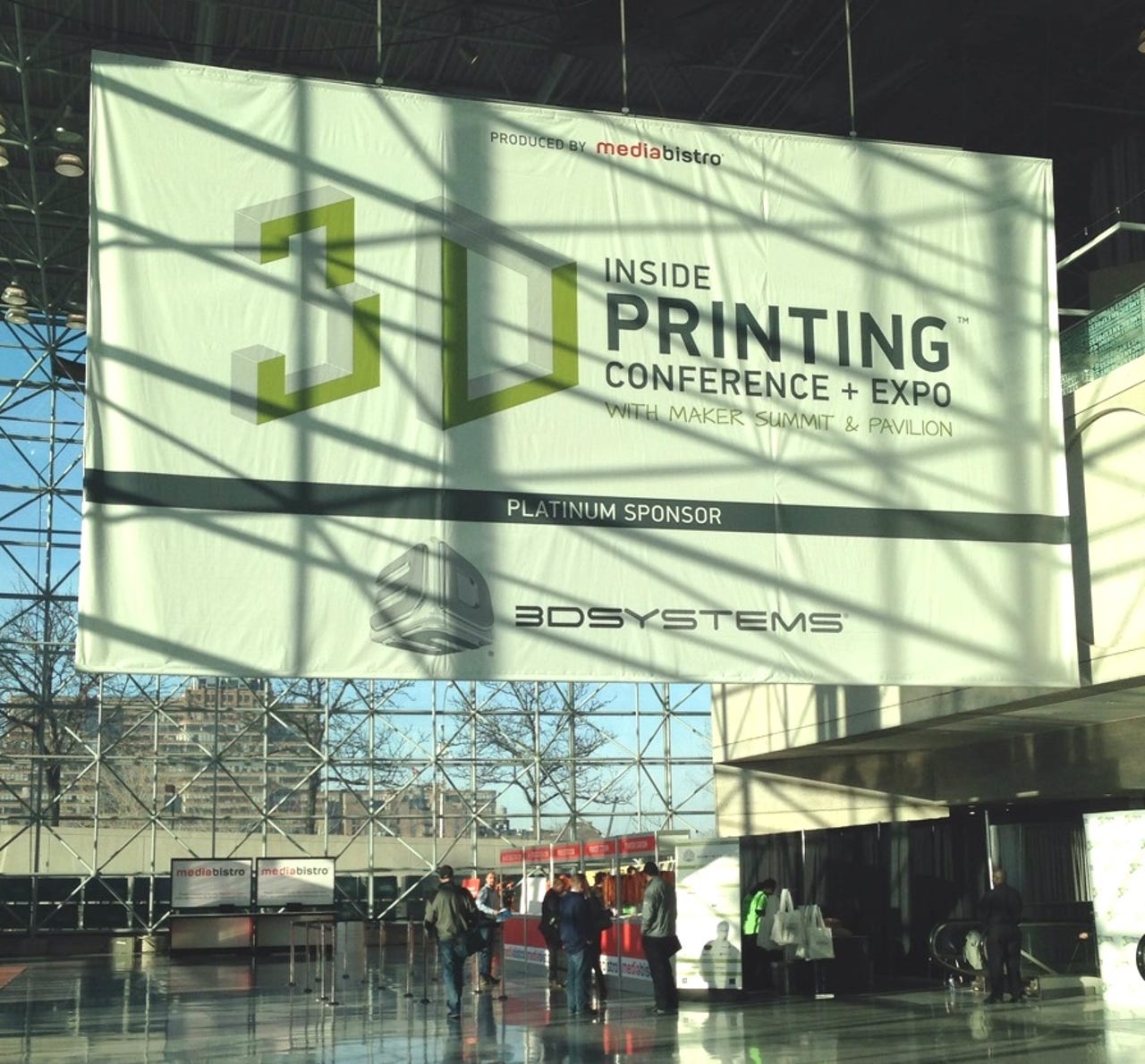3D Systems CEO touts '3D Printing 2.0' as it attempts to pre-empt HP


NEW YORK — The 3D printing industry is entering version 2.0, which will tranform and localize manufacturing, according to Avi Reichental, president and CEO of 3D Systems, who gave the keynote address at the second annual Inside 3D Printing Conference and Expo in New York City on Thursday.
More from ZDNET's coverage of Inside 3D Printers in New York City
"What we mean by 3D printing 2.0 is the complete imagination of the desktop and democratization of desktop prototyping, and the beginning of real mass manufacturing," he said. "And here I am talking about making tens of thousands of units a day using sophisticated and mutliple materials. The third leg is cloud sourcing--platform capabilities."
3D Systems introduced its 3D Printing 2.0 capabilities, which are specifically designed for engineers' desktops and the production floor in manufacturing. It increases reliability, performance, material utilization, and sustainability, said Reichental.
At the Inside 3D printing event, 3D Systems showcased:
- First professional full-color plastic 3D printer
- Multi-materials 3D printer
- Laser direct metal printers
- Its latest consumer grade 3D printer, the third generation Cube, which is under $1,000
This year, 3D Systems is also introducing a new line of 3D printing technologies, including scanners, modeling software, and products, many of which are on exhibit at the conference.
3D Systems is a worldwide leader in 3D printers. The company manufactures stereolithography (SLA), selective laser sintering (SLS), and fused deposition modeling (FDM) systems for professional and consumer use. The company has 1700 patents and 120 material sets and seven different machine engines, according to Reichental, who has been CEO since 2003.
"We are focused on democratizing access to this technology, moving to the factory floor, and to the desktop, and to the home in ways that will make it meaningful, productive, impactful and advance our ability to create and make," he said. "There is at least a 30 plus billion dollar opportunity here when we look at this entire digital thread."
The company recently announced several partnerships with Hasbro to co-develop immersive play experiences for children, and Hershey, to develop 3D printed chocolate candy. 3D Systems has already been experimenting with its ChefJet, which makes sugary confections. This week, the company also bought Medical Modeling, a provider of personalized surgical treatments and patient-specific medical tools that uses 3D modeling. They also recently partnered with Google to develop a 3D printer designed to produce smartphones, which Reichental said will be released later this year.
See also
Reichental said he sees increased drive for efficiency and sustainability, as well as shorter product cycles, which all contribute to the excitement surrounding 3D printing. He said 3D printing is transforming many industries, including aerospace, automotive, healthcare, and even startups.
These partnerships and acquisitions have made 3D Systems the leader in the printing space, though HP is on its tail.
Last month, HP CEO Meg Whitman announced that the company is planning to enter the 3D printing space by the end of this fiscal year, possibly even as early as June. Whitman said in the announcement HP has solved the speed and quality issues with current 3D printing technologies. Gartner forecasts a 62 percent increase in spending on 3D printing in 2014, and estimates enterprise spending will reach over half a billion dollars this year.
HP entering the 3D printing space is the elephant in the room, and clearly it's pushing 3D Systems to innovate and assert its current place in the market. Whoever ends up the leader, it's one of the hottest segements of the tech sector.
"It is ushering in a new kind of industrial renassiance, a one that is about localized, digital craftsmanship," Reichental said.